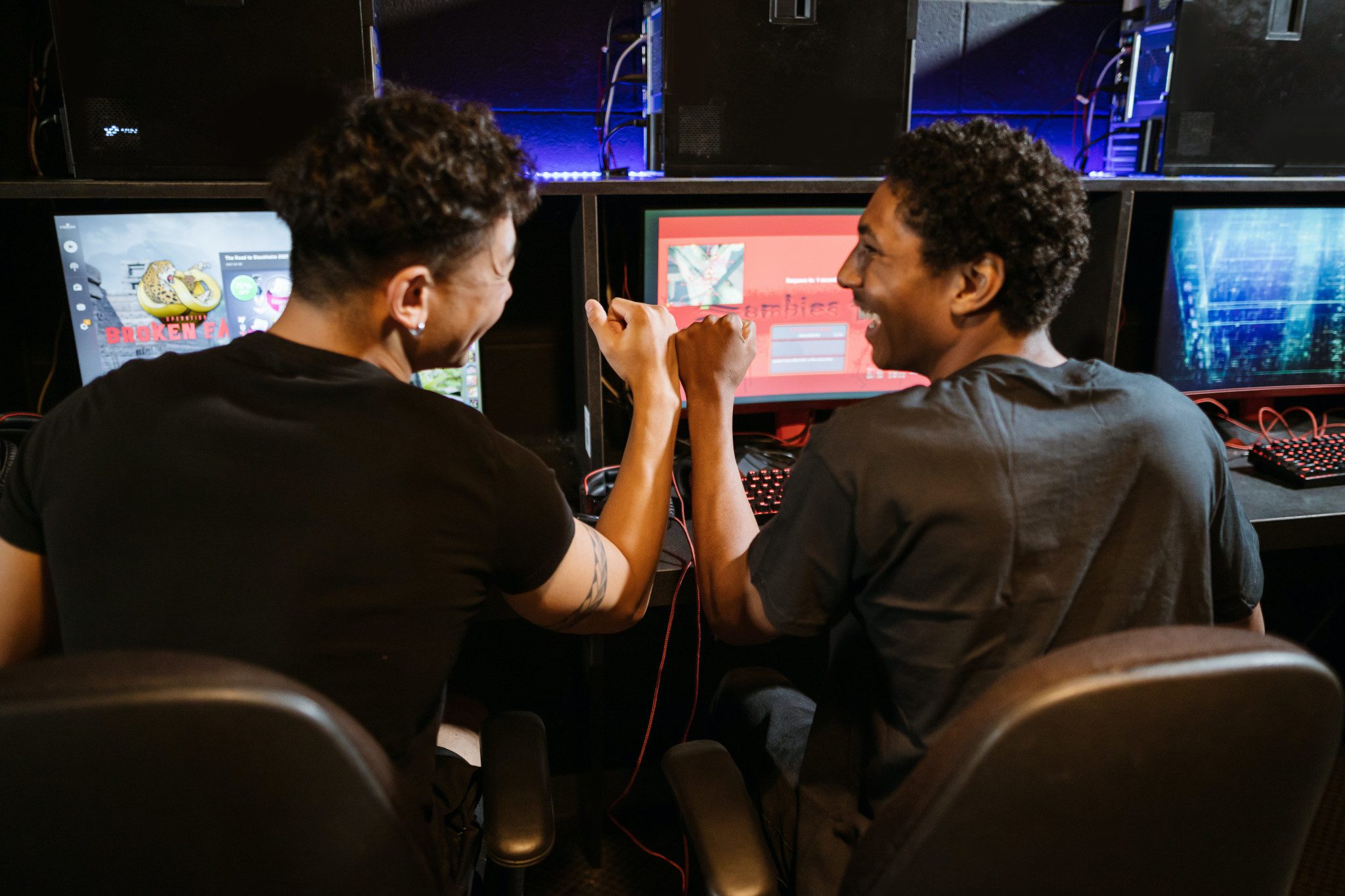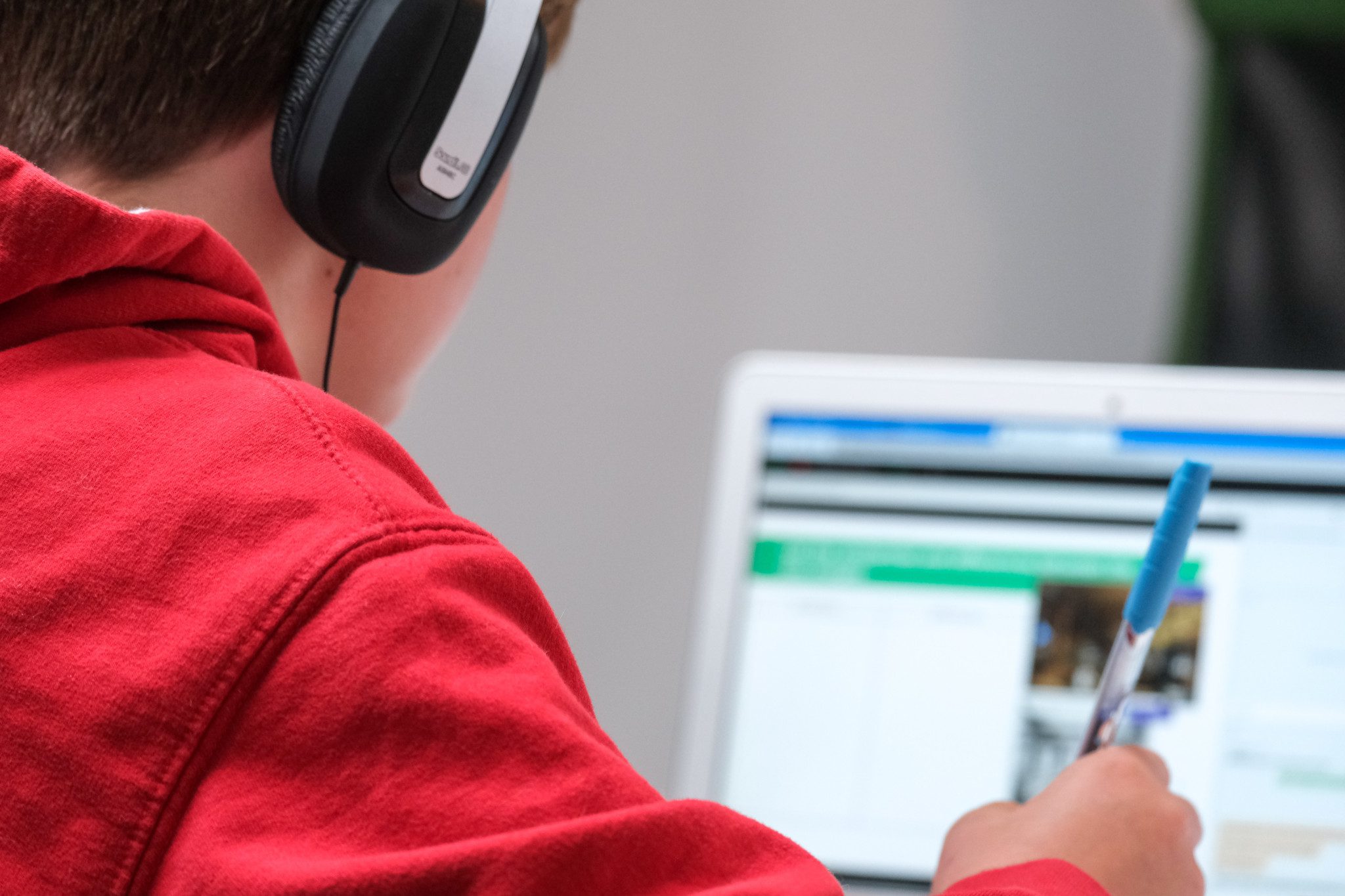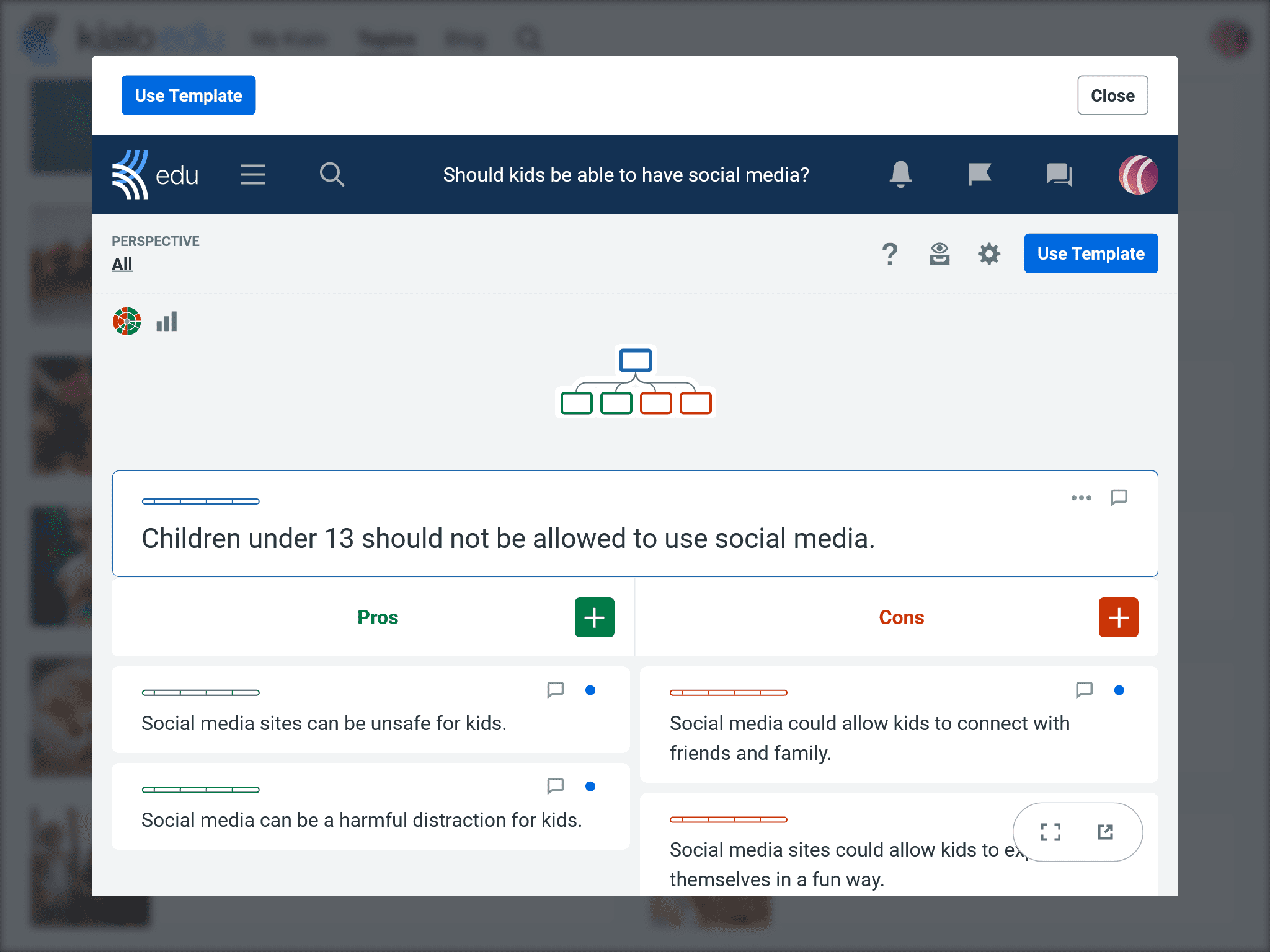Students today are “zoomers,” growing up in a fast-paced world with technology at their fingertips. In fact, it can sometimes be hard to pry the screens away! But familiarity with technology doesn’t mean students always make the right choices online.
That’s why teaching the elements of digital citizenship is crucial for them to succeed, in and out of school. Let’s take a look at what are the elements of digital citizenship, and how you can teach these skills on Kialo Edu!
What is digital citizenship ?
Good digital citizens have the skills and knowledge to use digital technologies safely and effectively. The elements of digital citizenship can be grouped into 3 categories: respect, educate, and protect. Let’s look at each of these in turn.
I. Teaching the “respect” elements of digital citizenship

1. Be aware of digital access for students
For many Gen Z’ers, digital access is easier than ever. However, a digital divide still exists between those with and without internet access.
It’s important for teachers to check whether students have access to digital technology at home. Students from low-income households or large families may not have their own devices, while some families may not prioritize technology. These students could lack technological confidence in class or may need offline alternatives to technology-based home learning.
2. Practice digital etiquette with students
Educators should invest time in teaching students about social etiquette as many students don’t realize that the online world has its own set of unwritten rules.
In your classroom, work with your students to create a code of conduct for online behavior. Encourage them to ensure their digital interactions are positive and respectful, and build their editing skills by teaching them to review content before posting.
Students need to be aware that every online interaction contributes to their digital footprint. Making responsible choices now could be important for their future careers!
3. Reinforce the importance of digital law with students
The online world often seems removed from reality, but students need to learn that their online behavior is subject to the law in the same way as in offline society.
In the classroom, focus on the laws most relevant to students, such as those based around harassment and malicious communication. With younger students, consider holding a Kialo Edu discussion about age restrictions on social media platforms.
And if you receive an essay that bears a striking resemblance to a Wikipedia article (or one that’s generated by AI), it may be a good time to start a discussion on copyright law and plagiarism!
II. Teaching the “educate” elements of digital citizenship

1. Practice digital communication with students
Whilst students may appear to be experts in communicating through social networks and other applications, they still have much to learn when it comes to effective digital communication.
In the classroom, teach students to tailor online communication according to its purpose. They might consider levels of formality, recognizing that this needs to match their intended audience.
Teaching students that online communication is not supported by verbal clues will encourage them to select words carefully to avoid miscommunication. This will set students on the path to success, as they are likely to rely on digital communication in their future careers.
2. Plan lessons around digital literacy
When undertaking a research project, today’s students are more likely to consult Google than the library, so teaching students to separate the factual from the fantastical is essential.
In the classroom, teach students how to find, evaluate, and cite digital materials. They need to be able to judge the reliability of information in order to make informed decisions and develop beliefs based on facts.
Digital literacy teaching needs to evolve in line with technology. Students should learn how emerging technologies like AI can “hallucinate” information. Teachers wary of students relying on AI in assignments can consider using Kialo discussions as an alternative assessment.
3. Introduce topics on digital commerce
In a world where an internet connection is all you need to drain your bank account, lessons in responsible digital commerce are crucial.
In the classroom, students need to learn how to become critical consumers. They should be able to evaluate buying options, spend within their limits, and protect their personal information. Consider having a discussion on the merits and downfall of online shopping to connect this with students’ lives!
III. Teaching the “protect” elements of digital citizenship

1. Teach digital rights and responsibilities to students
As the Spider-Man saying goes, “With great power comes great responsibility.” Students need to know their rights on the “web” but also understand their responsibilities to others.
In the classroom, students should learn that everyone has basic rights to privacy, security, and freedom of speech. Thus, students have a responsibility to use digital technologies in a responsible manner, treating others as they themselves wish to be treated.
Students also need to learn how to respond to digital rights violations, for example by blocking or reporting suspicious accounts. To dig deeper into this topic, have students balance the right to online privacy versus public security!
2. Practice digital safety and security
Today’s digital natives may be less aware than previous generations of potential dangers online. As such, it’s vital they learn about digital safety and security.
In the classroom, educators should teach students about online risks enabling them to make informed decisions. Students need to know how to protect their personal information and learn about practical safety measures, such as backing up data and using antivirus protection.
This knowledge can empower students to keep themselves safe in the ever-changing digital landscape.
3. Foster digital health and wellness
With 35% of teens reporting that they use the top social media platforms “almost constantly,” teaching about digital health and wellness is a priority.
In the classroom, students should learn how to self-manage screen time, recognizing how sites select content to maintain engagement. Educators can model the importance of balance in online and offline activities with the appropriate use of screens in class. You can have a discussion on the use of devices at the family dinner table!
Educators should raise awareness of the differences between online and offline identities, and that self-presentation online is not always reflective of reality. Students should consider how comparisons with these online personas can damage mental health and learn ways to boost their own self-esteem.
How can educators teach the elements of digital citizenship with Kialo Edu?

Kialo Edu is packed with features to help teach students about digital citizenship.
Using our debate topics, students can develop digital etiquette, communication, and responsibility by writing and responding respectfully to claims and considering multiple perspectives. Supporting claims with sources can build their understanding of digital law and media literacy.
And all this can be achieved through holding discussions on the topic of digital citizenship itself!
We would love to hear your stories of how you are empowering your zoomers to become responsible digital citizens! Contact us at feedback@kialo-edu.com, or via social media.
If you’re looking for more ideas on teaching civics education in the classroom, we’ve got lots more resources to help your students become active, engaged citizens!

